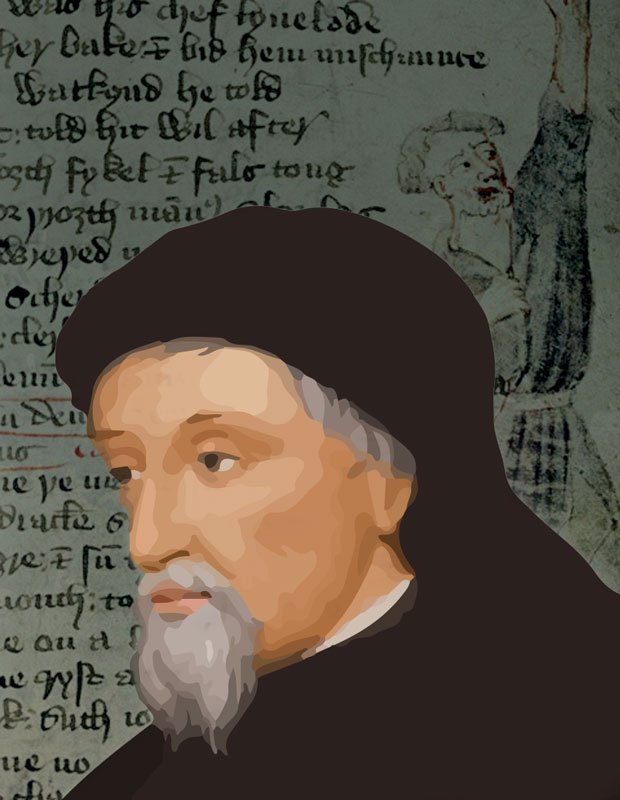
Who Was William Langland?
Langland, William, c.1332–c.1400, putative author of Piers Plowman. He was born probably at Ledbury near the Welsh marshes and may have gone to school at Great Malvern Priory. Although he took minor orders he never became a priest. Later in London he apparently eked out his living by singing masses and copying documents. His great work, Piers Plowman, or, more precisely, The Vision of William concerning Piers the Plowman, is an allegorical poem in unrhymed alliterative verse, regarded as the greatest Middle English poem prior to Chaucer. It is both a social satire and a vision of the simple Christian life. The poem consists of three dream visions: (1) in which Holy Church and Lady Meed (representing the temptation of riches) woo the dreamer; (2) in which Piers leads a crowd of penitents in search of St. Truth; and (3) the vision of Do-well (the practice of the virtues), Do-bet (in which Piers becomes the Good Samaritan practicing charity), and Do-best (in which the simple plowman is identified with Jesus himself). The 47 extant manuscripts of the poem fall into three groups: the A-text (2,567 lines, c.1362); the B-text, which greatly expands the third vision (7,242 lines, c.1376–77); the C-text, a revision of B (7,357 lines, between 1393 and 1398). Most scholars now believe that at least the A- and B-texts are the work of William Langland, whose biography has been deduced from passages in the poem. However, some still hold that the poem is the work of two or even five authors. The popularity of the poem is attested to by the large number of surviving manuscripts and by its many imitators. The 19th-century edition of W. W. Skeat (new ed. 1954) is still standard; the best modern versions are those of Donald Attwater (1930) and H. W. Wells (1935).
See studies by E. T. Donaldson (1955; and 1949, repr. 1966), M. W. Bloomfield (1962), E. D. Kirk (1972), J. M. Bowers (1986), and A. V. Schmidt (1987); critical writings, ed. by S. S. Hussey (1969).
